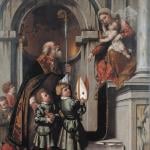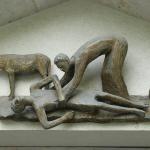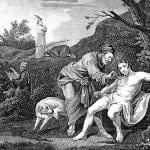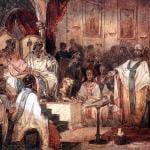Colombo, Sri Lanka, Sep 15, 2014 / 08:04 pm (CNA/EWTN News).- The annual “Day for the Sick” held by the Archdiocese of Colombo recently drew more than 5,000 Sri Lankan faithful to the Basilica of Our Lady of Lanka for a service led the Cardinal Ranjith. The spiritual, inner healing service and blessing of the sick is a renewal of faith held in Ragama, a suburb of Colombo, and has been observed annually for 67 years. Cardinal Malcolm Ranjith of Colombo led the Aug. 31 service, accompanied by two of his auxiliary bishops, Emmanuel Fernando and Maxwell Silva, and hundreds of priests and religious. “There is no point in pleading to God if we are leading a life of duplicity,” Cardinal Ranjith advised those attending the healing service during his homily. He told the faithful that merely listening to homilies is useless without practicing their advice and living it out in a transformation of their lives, urging the people to “turn away from wicked and sinful ways.” Mindful of the challenges facing his people in the wake of tsunamis and an ethnically divisive civil war which ended only five years ago, Cardinal Ranjith stressed that “before anything else, we need to heal the wounds that afflict this land of ours, which is no longer a healthy nation." “The hearts of our people are wounded and plagued with various forms of diseases, where even race and religion do not spare demeaning the dignity of a person,” he lamented. “The tendency we have today is to rise above others in any way possible, using any means, even to the extent of putting down the other … so these wounds in our people only grow deeper and deeper and fester, and thus people become more and more discouraged.” In a pastoral letter last year, the Sri Lankan bishops urged reconciliation and nation building, urging the people to “learn to settle issues among ourselves through dialogue and in a spirit of magnanimity,” rather than inviting foreign organizations to become involved. The country is under pressure from international agencies to probe alleged atrocities and human rights violations during the civil war between Sinhala nationalists and Tamil separatists which claimed at least 60,000 lives. The Church has been instrumental in carrying its mission of evangelization through its social teaching and interreligious dialogue, and has untiringly engaged in helping post-war reconciliation and nation building. The Colombo archdiocese's prayer day for the sick began in 1947, when Archbishop Jean-Marie Masson, O.M.I., had a vision of such a prayer service for those with pain and suffering, to give them spiritual solace and draw them close to God. In the years since, the service has drawn thousands who come in sickness and grief to petition, also for their loved ones, to receive graces and miracles of healing. The basilica at which it is held hold a special significance for Sri Lankans, having been constructed in thanksgiving to the Blessed Virgin Mary for having protected the island during World War II. In May, 1940, Archbishop Masson had prayed that if the nation was spared the ravages of the war, he would build a basilica dedicated to Our Lady of Lanka. The British navy operated out of bases in Sri Lanka, but the island was itself spared any violence during the war. In 1947, Pius XII granted Archbishop Masson permission to build the basilica, and when the archbishop died later that year, the work was carried out by his successor, Cardinal Thomas Cooray. The Archdiocese of Colombo is currently in the midst of its Year of Mary, which will conclude in November, and is preparing for the Jan. 13-15 visit of Pope Francis, during which he is expected to visit the Basilica of Our Lady of Lanka. Read more
















